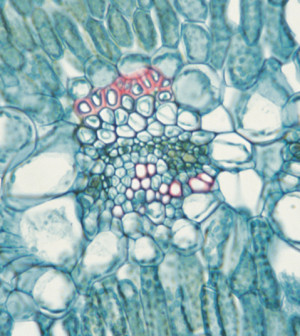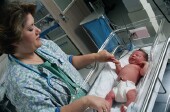- How Daily Prunes Can Influence Cholesterol and Inflammation
- When to Take B12 for Better Absorption and Energy
- Epsom Salts: Health Benefits and Uses
- See What Saffron Can Do for Sleep and Heart Health
- 6 Common Mistakes to Avoid Before Your Physical
- Can Sweating Really Help You Beat a Cold?
- Strengthening Your Relationship: Practical Strategies
- Skip Storing This Everyday Product in the Fridge Door
- Green Tea + B3 Pairing May Boost Brain Health
- Navigating Your Midlife Crisis: Embracing New Possibilities
1 in 5 Preemies With Lung Disease Exposed to Secondhand Smoke


High levels of nicotine were found in the hair of many children with premature birth-related lung disease whose parents claimed not to smoke, a new study finds.
The lung disease bronchopulmonary dysplasia often occurs in children who were born prematurely. Not surprisingly, exposure to tobacco smoke can be harmful for children with this condition, according to the researchers.
In this study, Johns Hopkins Children’s Center researchers analyzed nicotine levels in hair samples from 117 children younger than 3. All of the children had been seen at the bronchopulmonary dysplasia clinic between January 2012 and January 2014.
During those visits, parents provided information about the children’s exposure to tobacco smoke at home.
The researchers found that about 20 percent of the children were exposed to tobacco smoke at home. However, 22 percent of the babies who lived in what their parents said were nonsmoking homes had hair nicotine levels similar to children who lived in homes with smoking.
This means that parents provided inaccurate information about smoking in the home or the children were exposed to tobacco smoke somewhere else, according to the study published recently in the journal Pediatrics.
Many of the children live in multi-unit housing where smoking is permitted and may be exposed to tobacco smoke that way, the researchers suggested.
“We found that more than one-fifth of children whose caregivers report nonsmoking households have significant exposure,” Dr. Sharon McGrath-Morrow, a lung specialist and professor of pediatrics, said in a Hopkins news release.
The researchers also found the effects of tobacco smoke exposure were more significant for the children who needed either supplemental oxygen or mechanical ventilation to breathe. They saw a six- to seven-fold higher risk of hospitalizations and activity limitations when these youngsters showed signs of exposure to smoke.
“Tobacco smoke is a modifiable exposure,” McGrath-Morrow said. “If we could prevent [smoke exposure] in these children, they’d likely have better outcomes.”
She added that she hoped that the study might lead to better ways to protect these vulnerable children.
More information
The U.S. National Heart, Lung, and Blood Institute has more about bronchopulmonary dysplasia.
Source: HealthDay
Copyright © 2026 HealthDay. All rights reserved.










